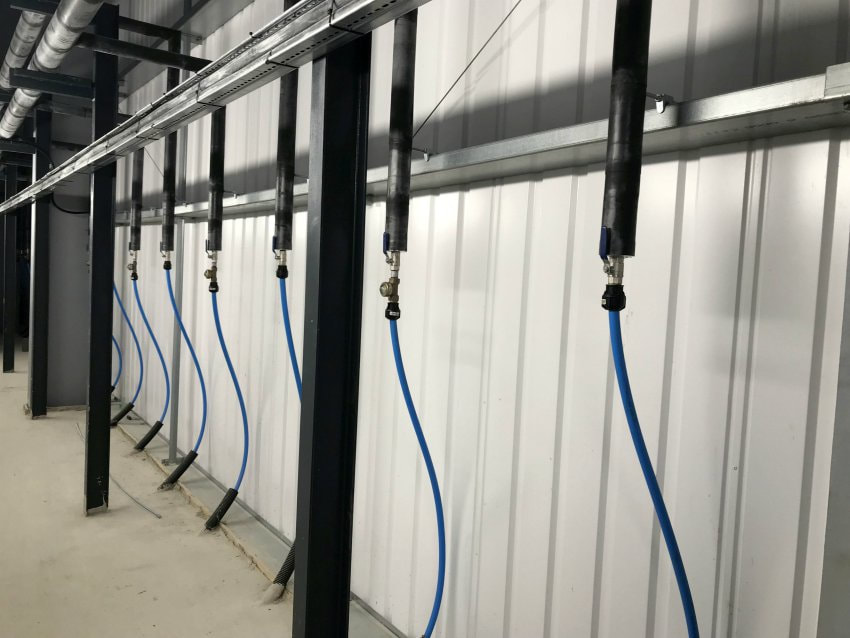17 December 2018
|
| Ed Whinyates of Stonegrove Refrigeration details why choosing the right equipment and refrigerant is the best way to ensure value for money. For any capital project, it is never easy for a customer to select the right refrigeration proposal from contractors. Based on the assumption that all the tendering contractors are proposing a system that will ‘do the required job’ a final choice may boil down to price. Certainly price is very important, but the question needs to be asked “what is the client getting for their money?” We would like to think that all refrigeration companies will offer the best possible solution when putting together a proposal – especially if there is not a detailed specification and the full design is part of the tender process. However, as there is not a ‘one size fits all’ solution, each contractor may take a different approach when working out duty calculations and equipment selection. At the very least it would be expected that what is proposed will work, but there are a number of factors that a client ought to consider over and above the total price. These should include energy efficiency, running costs and longevity of plant. |
| In simple terms the following analogy may help to illustrate this. A customer needs to buy a delivery van to take a full load of product from the factory to the wholesaler, so they look at two vans. Both look similar and can carry the same amount of product. Van A costs £15,000.00 and Van B costs £18,000.00. However, Van A will need to be refuelled twice as often and will need to be replaced after 5 years. Van B uses half the amount of fuel and will last 10 years. Admittedly this is a simplistic example, but the choice of a refrigeration system can be very similar to this. Value for money At a time of great change in refrigeration, particularly with F-Gas regulations and a real need to address our environmental impact, we believe it is our responsibility to ensure that energy efficiency, running costs and longevity of plant are addressed when designing and proposing a refrigeration solution. A new installation can be a huge cost to an end client, which impacts on cash flow and offers no direct financial return. Because of these factors there is no doubt that the cost of a project is very important, so the approach should be aimed at value for money, not cheapest price. How? There are a number of ways to ensure the client gets value for money, with one of these being the equipment selection. Correct equipment selection will help with improved running costs and offer greater longevity. It is estimated that refrigeration uses up to 50% - 75% of a company’s energy consumption so a bespoke design can incorporate a number of features which may benefit the client over and above just keeping an area at a specific temperature. Some good examples include things such as heat recovery which can be used to heat the glycol for the cold store heater mat and help with office heating running costs. For a relatively small capital outlay, free cooling can be incorporated at the time of installation – which is a great energy saver during the colder months of the year. With efficiency comes an improved effect on the environment. This in turn offers the opportunity to apply for grants and funding (tax relief benefits etc.) which helps offset some of the capital outlay. Some good examples of efficiency include EC fans – which are more efficient (DC technology) and offer variable speed on condensers. Inverter drives on compressor motors increase the efficiency of reciprocating compressors, as it slows down and saves on running costs. It also eliminates the stopping and starting of compressors (cutting out the power spike costs associated with starting up a motor). Air purgers on industrial applications remove non combustibles, thereby reducing discharge pressure and, in turn, the energy consumed. There are also further technologies such as floating head pressure control and suction pressure optimisation. Another way to ensure longevity of a refrigeration system is the refrigerant selection. With the ongoing changes to F-Gas regulations, one of the best ways to ensure value for money is to future-proof an installation. By ensuring an installation has a refrigerant with a low GWP (Global Warming Potential) this will help to negate the need to rip out a functioning system – which is a problem many companies using R404A are facing. The best examples of these are the natural refrigerants – being ammonia (NH3) and CO2 (R744). There are also a growing number of new refrigerants being released by manufacturers, including pure HFOs and multi-component blends. HFO (HydroFluoroOlefin) refrigerants are the fourth generation of refrigerants to be developed and introduced to the market. They are an alternative refrigerant with low GWP values that reduce environmental impact while offering energy efficiency. In conclusion Sometimes the cheapest price wins out, but this shouldn’t detract or compromise a system design. Value for money isn’t about being the cheapest price, it is about being focussed on offering the client the best possible solution for the best possible value for money. To find out how Stonegrove can help with your refrigeration requirements, please contact 01279 408690 [email protected] www.stonegroverefrigeration.co.uk |
Content continues after advertisements










